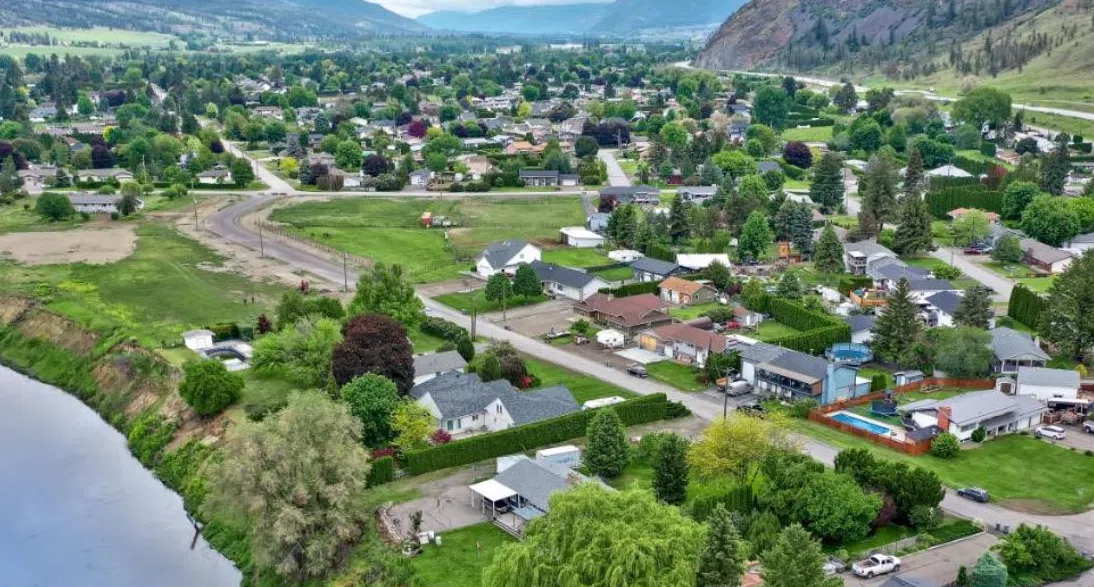
Aerial view of the Rayleigh area of Kamloops. (Photo via Kevin Scharfenberg/exp Realty)
The City of Kamloops and the Sun Peaks Mountain Resort Municipality have both been given more time to amend zoning bylaws and upgrade infrastructure to allow for more housing to be built.
Housing Minister Ravi Kahlon says the province reviewed requests from a number of communities that were asking for extensions to the June 30 deadline that required they fix outdated zoning rules to allow for more row homes, triplexes, and town homes.
In Kamloops’ case, the extension is largely to do with the Rayleigh Waterworks District, which is responsible for the provision of water and sewer services in Rayleigh-area.
Speaking on NL Newsday, Kahlon says Kamloops has until Dec. 31, 2030 to ensure that the zoning bylaws in that part of the City comply with the new provincial small-scale, multi-unit housing (SSMUH) legislation.
“We had an independent engineering firm come in and review every community’s requests and validate whether that was a real challenge, and in this case, they identified parts of Kamloops that actually need more infrastructure before this housing can be built,” Kahlon said.
“They had an engineering firm look at it and say ‘here is where we believe it can built, and here are some pockets in the community where the infrastructure is lacking.'”
Sun Peaks was also granted an extension to ensure that its zoning bylaws for the entire community are in compliance by June 30, 2027.
There were 10 local governments that got extensions for the entire community, while 11 others had extensions that covered certain areas and neighbourhoods where infrastructure upgrades are needed or underway. A further seven requests for extensions were declined.
“When communities come forward and they’re doing it because its actually an issue, we are willing to of course give extensions for that work to happen,” Kahlon added. “We’ve given extensions to communities according to how long we believe they’re going to need to get that infrastructure in place.”
As part of changes, B.C. communities had until June 30 this year to allow either a minimum of one secondary suite or detached accessory dwelling unit; a minimum of three to four dwelling units; or a minimum of six dwelling units near bus stops with frequent transit service, depending on location and population.
“86 per cent of communities across the province already did make the changes that were needed because they have the infrastructure,” Kahlon said, noting there may be further extensions granted, if required.
“These communities have asked for extensions, and we’ll be following up with them as the work goes on. If a community says we need another six months to finish our infrastructure and work is already underway, of course there is going to be flexibility.”
More to come















